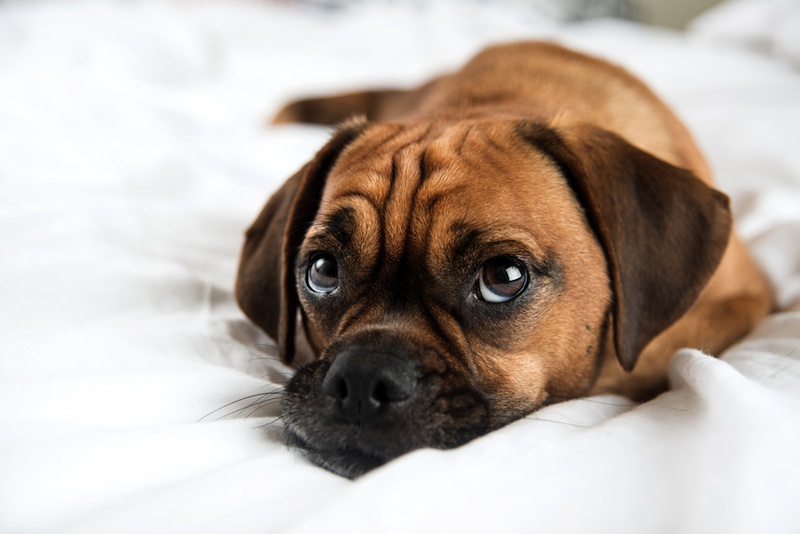'I Wanna Eat You Up!' Why We Go Crazy for Cute

NEW ORLEANS — Ever reacted to the sight of a cute puppy or darling infant by squealing, "I want to eat you up!"? Or maybe you can't help but want to pinch your grandbaby's adorable cheeks. You're not alone. New research finds that seemingly strange aggressive responses to cuteness are actually the norm.
In fact, people not only verbalize these aggressive desires with phrases like, "I just want to squeeze something!" they also really do act them out. In the study, presented Friday (Jan. 18) here at the annual meeting of the Society for Personality and Social Psychology, researchers found that people watching a slideshow of adorable pictures popped more bubbles on a sheet of bubble wrap than did people viewing funny or neutral pictures.
"We think it's about high positive-affect, an approach orientation and almost a sense of lost control," said study researcher Rebecca Dyer, a graduate student in psychology at Yale University. "You know, you can't stand it, you can't handle it, that kind of thing."
Too cute
Dyer got interested in what she and her colleagues call "cute aggression" after chatting with a fellow student about how adorable Internet pictures often produce the desire to squish or squeeze the cute critter. All the existing research on cuteness suggests the reaction should be the opposite, she told LiveScience. People should want to treat a cute thing with gentleness and care. [Gallery: World's Cutest Baby Wild Animals]
And indeed, Dyer said, it's not as though people really want to hurt a basketful of kittens when they see the furballs tumbling all over one another.
"We don't have a bunch of budding sociopaths in our studies that you have to worry about," she said.
Get the world’s most fascinating discoveries delivered straight to your inbox.
But something odd seemed to be going on. So Dyer and her co-author, fellow Yale graduate student Oriana Aragon, first ran an experiment to see if cuteness aggression was a real phenomenon. They recruited 109 participants online to look at pictures of cute, funny or neutral animals. A cute animal might be a fluffy puppy, while a funny animal could be a dog with its head out a car window, jowls flapping. A neutral animal might be an older dog with a serious expression.
The participants rated the pictures on cuteness and funniness, as well as on how much they felt the pictures made them lose control — for example, if they agreed with statements such as "I can't handle it!" The participants also rated the extent to which the pictures made them "want to say something like 'grr!'" and "want to squeeze something."
Sure enough, the cuter the animal, the less control and more desire to "grrr" and squeeze something that people felt. Cute animals produced this feeling significantly more strongly than did funny animals. The funny critters in turn produced the feeling more strongly than did neutral animals, perhaps because the funny animals were perceived as cute, too, Dyer said.
Dealing with adorable
Still, those results could have merely identified a verbal expression for cuteness, rather than a real feeling. So Dyer and her colleagues asked 90 male and female volunteers to come into a psychology laboratory and view a slideshow of cute, funny and neutral animals.
Researchers told the participants that this was a study of motor activity and memory, and then gave the subjects sheets of bubble wrap. The participants were instructed to pop as many or as few bubbles as they wanted, just as long as they were doing something involving motion.
In fact, the researchers really wanted to know if people would respond to cute animals with an outward display of aggression, popping more bubbles, compared with people looking at neutral or funny animals.
That's exactly what happened. The people watching a cute slideshow popped 120 bubbles, on average, compared with 80 for the funny slideshow and just a hair over 100 for the neutral one.
Dyer said she and her colleagues aren't yet sure why cuteness seems to trigger expressions of aggression, even relatively harmless ones. It's possible that seeing a wide-eyed baby or roly-poly pup triggers our drive to care for that creature, Dyer said. But since the animal is just a picture, and since even in real life we might not be able to care for the creature as much as we want, this urge may be frustrated, she said. That frustration could lead to aggression. [10 Things You Didn't Know About the Brain]
Alternatively, people could be trying so hard not to hurt the animal that they actually do so, much as a child wanting to care for a cat might squeeze it too tightly (and get scratched for the effort).
Or the reason might not be specific to cuteness, Dyer said. Many overwhelmingly positive emotions look negative, as when Miss America sobs while receiving her crown. Such high levels of positive emotion may overwhelm people.
"It might be that how we deal with high positive-emotion is to sort of give it a negative pitch somehow, Dyer said. "That sort of regulates, keeps us level and releases that energy."
Follow Stephanie Pappas on Twitter @sipappas or LiveScience @livescience. We're also on Facebook & Google+.

Stephanie Pappas is a contributing writer for Live Science, covering topics ranging from geoscience to archaeology to the human brain and behavior. She was previously a senior writer for Live Science but is now a freelancer based in Denver, Colorado, and regularly contributes to Scientific American and The Monitor, the monthly magazine of the American Psychological Association. Stephanie received a bachelor's degree in psychology from the University of South Carolina and a graduate certificate in science communication from the University of California, Santa Cruz.
 Live Science Plus
Live Science Plus





